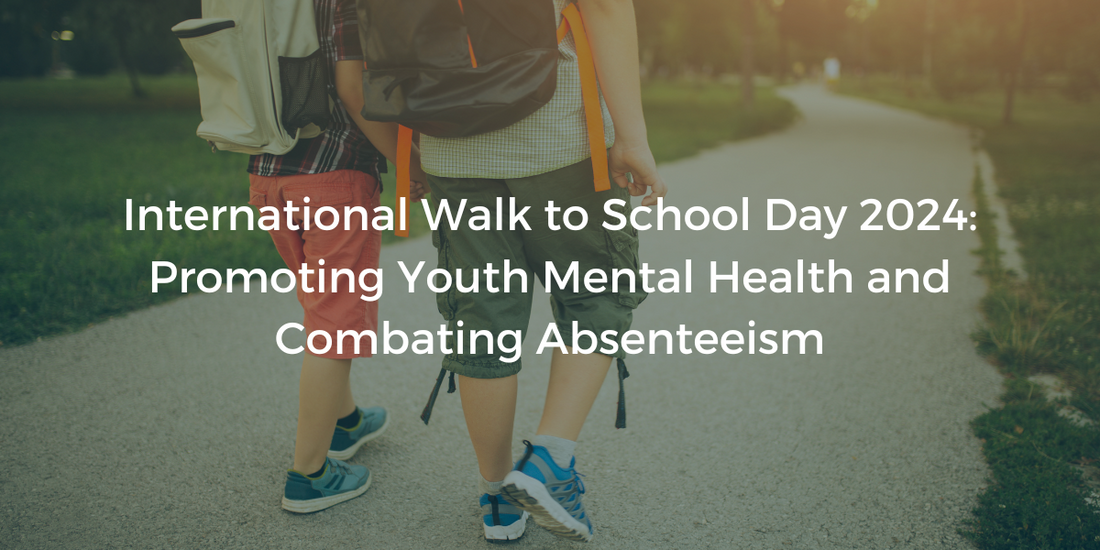History and Origin of International Walk to School Day (IWTSD)
International Walk to School Day (IWTSD) has a rich history that dates back to the early 1990s in Britain. It began as a campaign to promote walking as a healthier, more sustainable form of student transportation. In 1997, the event was introduced to North America, expanding beyond Britain’s borders. By 2000, it had grown into an international event with participants from several countries, including Canada, Great Britain, the United States, Ireland, and others. This milestone marked the beginning of a global movement, and by 2003, IWTSD expanded into a week-long celebration across 33 countries. The popularity of the event ultimately led to the creation of International Walk to School Month, which takes place throughout October.
International Walk to School Day in Canada
Canada has played a significant role in the global success of IWTSD. In 1998, the country held its first national "Walk a Child to School Day," setting the stage for its involvement in the international event in 2000. Today, International Walk to School Day is a well-established initiative in Canada, with schools from all provinces and territories participating. It has evolved into International Walk to School Week, celebrated during the first week of October. In 2003, over 850 schools in Ontario alone, representing approximately 330,000 students, took part.
How is International Walk to School Day Related to Youth Mental Health?
IWTSD offers numerous benefits for youth mental health, primarily through promoting physical activity, which is closely linked to mental well-being. Studies have shown that regular physical activity, such as walking to school, can reduce anxiety and depression in children and adolescents. Walking to school provides an opportunity for students to relieve stress, connect with peers, and engage in social activities, all of which contribute positively to their mental health.
The social aspect of walking to school encourages peer interaction, helping students build friendships and develop essential social skills. Walking also fosters independence and confidence as students learn about road safety, time management, and navigating their routes.
International Walk to School Day and School Phobia and Absenteeism
School phobia and absenteeism are growing concerns globally, and IWTSD plays an important role in addressing these issues. School phobia, also known as school refusal, is often linked to anxiety and stress associated with school environments. By creating a positive and supportive atmosphere around the journey to school, IWTSD helps to alleviate some of the stress and anxiety students may experience.
Physical activity, such as walking to school, can reduce anxiety and improve mental health, which in turn helps combat school avoidance. Additionally, the social component of walking with peers and teachers can make the idea of attending school less daunting for students who struggle with school-related anxiety. IWTSD encourages community-wide participation, further supporting students and their families in addressing chronic absenteeism.
The Importance of IWTSD and Addressing School Phobia in Canada and Globally
The connection between IWTSD, youth mental health, and absenteeism is crucial not only for Canada but for the global community. In Canada, school absenteeism and youth mental health challenges are escalating concerns. Chronic absenteeism has lasting implications, not just for students' academic achievement but also for their future well-being and job prospects. Globally, anxiety disorders are the most common mental health issue among adolescents, affecting at least 8% of youth in many regions. Addressing school refusal through community-based initiatives like IWTSD is a proactive way to promote school attendance and combat these issues.
Key Facts About School Phobia and Absenteeism in 2024
- Chronic absenteeism rates are on the rise: Since the COVID-19 pandemic, absenteeism rates have more than doubled in some Canadian districts.
- School phobia impacts a significant number of youth: Over 1-2% of students in Canada experience chronic school avoidance, while many more may engage in school refusal at some point.
- Link to mental health: Most students who refuse to attend school have underlying anxiety or depressive disorders.
- Regional disparities: Some provinces, like Newfoundland and Labrador, report higher-than-average absenteeism rates, with up to two-thirds of students chronically absent.
How to Observe International Walk to School Day in 2024
Here are some suggestions for observing International Walk to School Day in 2024:
- Walk to school: Encourage students and families to walk to school instead of using motorized transport.
- Organize a walking school bus: Adults can lead groups of children in walking to school, making the journey fun and safe.
- Promote school-wide events: Schools can host assemblies, picnics, or reward ceremonies for participating students.
- Teach safety: Use the opportunity to educate students about pedestrian safety.
- Extend the initiative: Consider organizing regular "Walking Wednesdays" to continue promoting active travel throughout the year.
Tips for International Walk to School Day
- Plan Ahead: Organize routes, ensure adult supervision, and promote the event through school newsletters and social media.
- Engage the Community: Involve local authorities, parents, and volunteers to support safety and engagement.
- Make it Fun: Incorporate games, challenges, or incentives like stickers or badges to encourage participation.
YMHC Resources for International Walk to School Day
Youth Mental Health Canada (YMHC) offers several resources to support mental wellness and address school phobia and absenteeism:
- Workbooks and Guidebooks: YMHC’s evidence-based resources, such as Supporting Students with School Phobia: A Guidebook for Families and Schools and Sources of Strength for Mental Wellness, offer practical strategies for students and families.
- Training Courses: YMHC provides professional training on school-wide strategies for supporting students with school phobia and chronic absenteeism.
- Workshops and Presentations: YMHC offers tailored workshops for schools, families, and community organizations to promote mental wellness and address absenteeism.
For more information and to access YMHC’s resources, visit the YMHC website.
By participating in International Walk to School Day, communities can contribute to healthier, more engaged students while addressing the growing challenges of school phobia and absenteeism.

